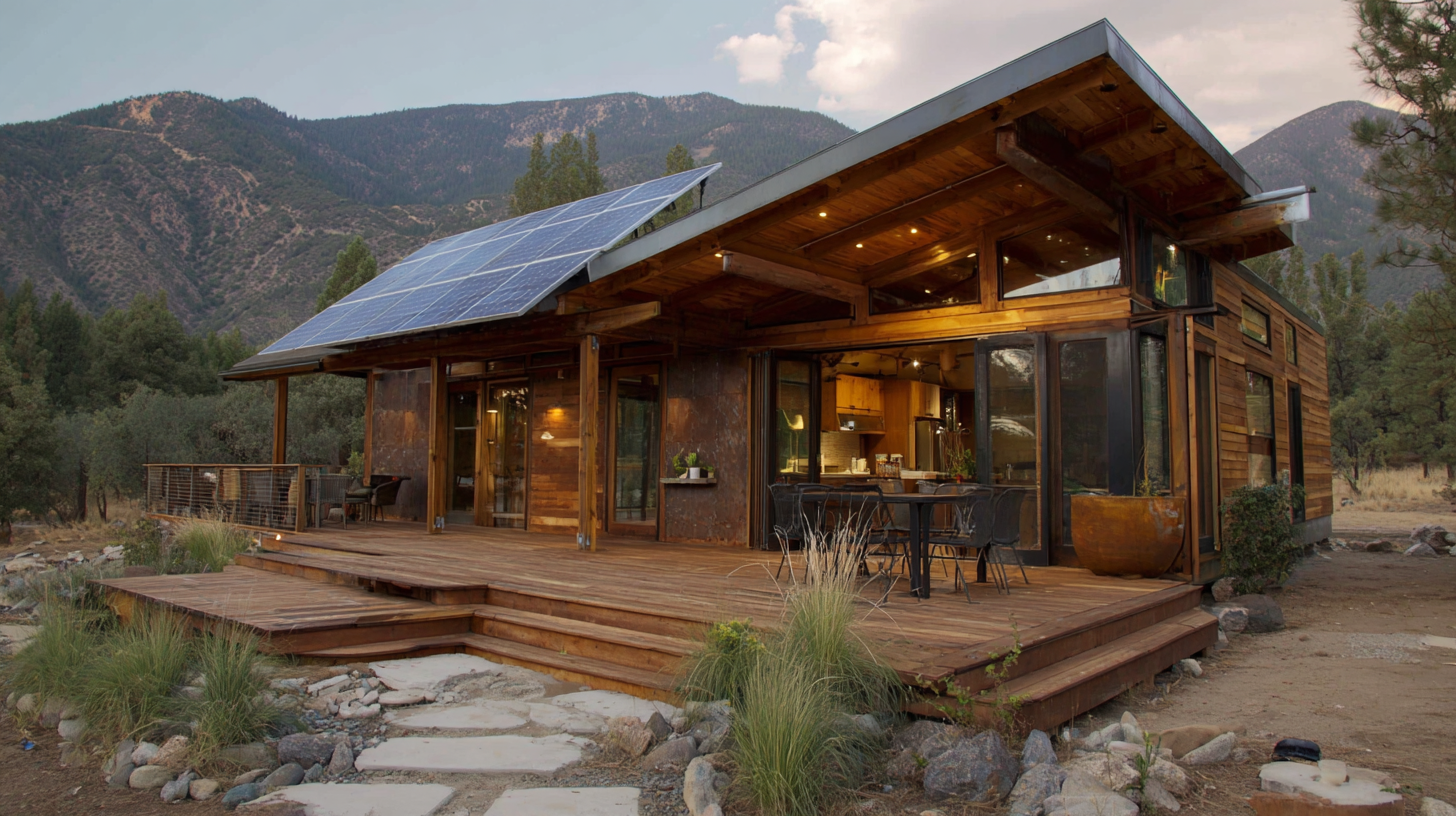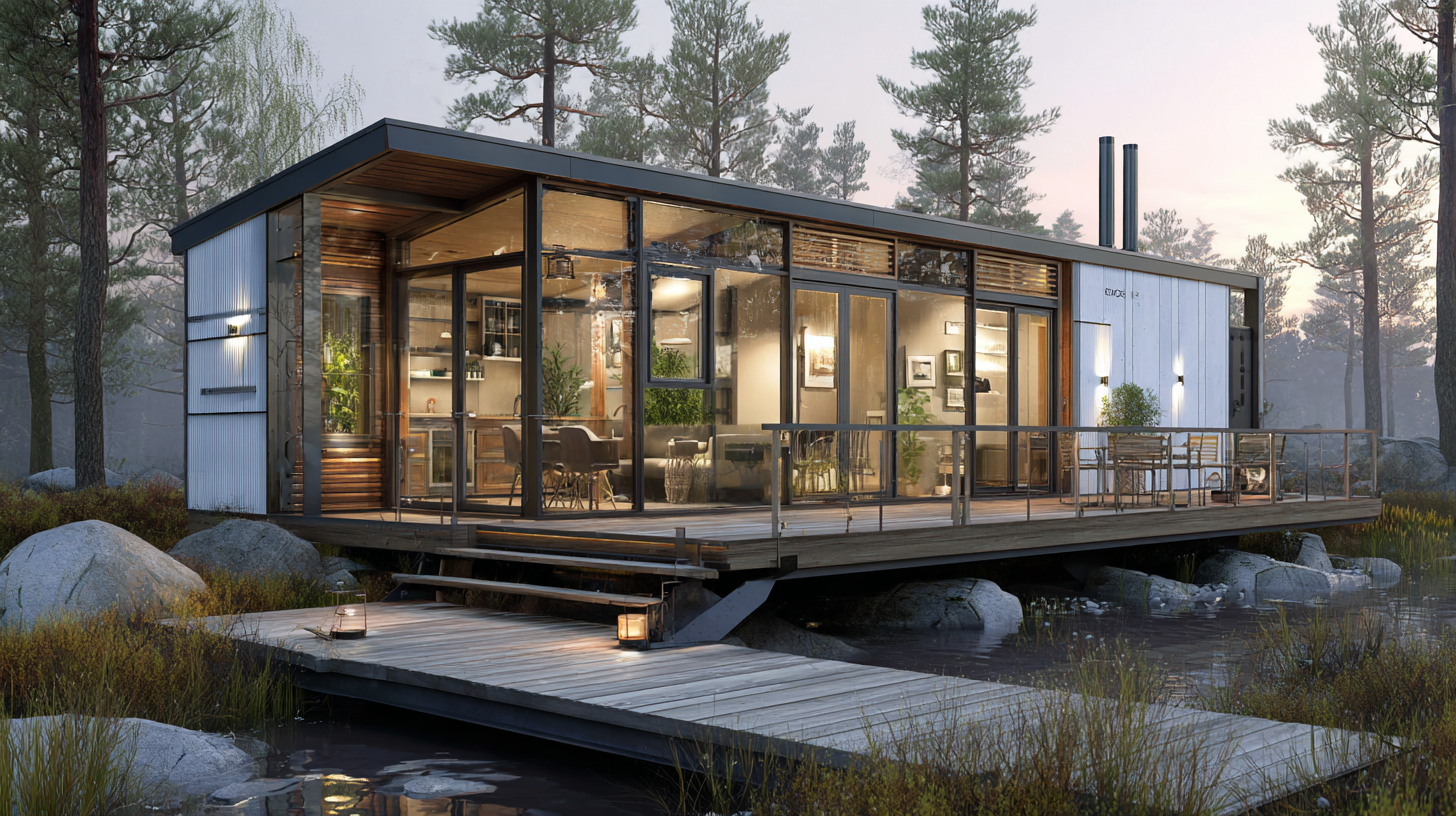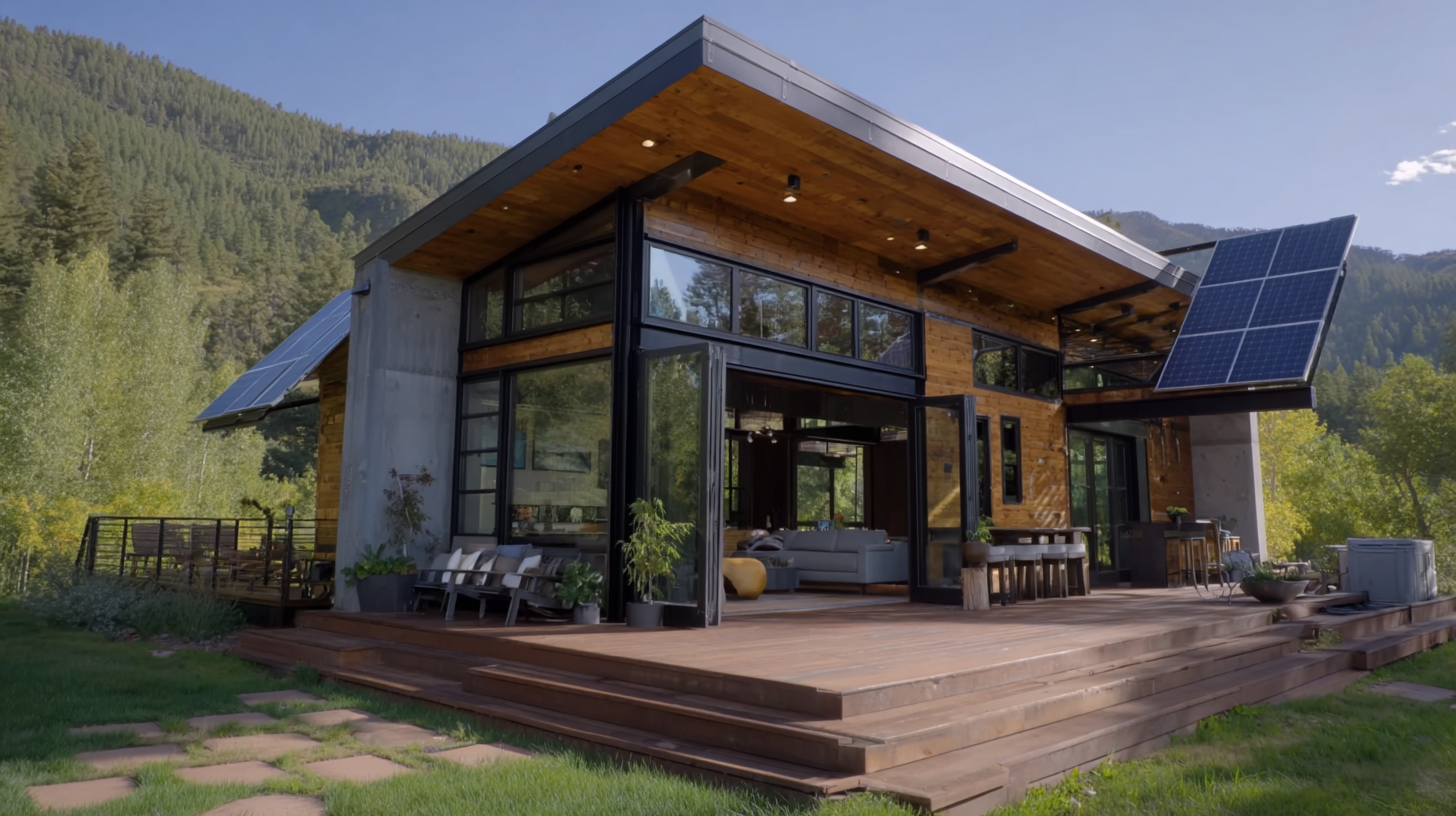In recent years, the concept of sustainable living has gained immense popularity, driving many to explore innovative housing solutions. Among these, Off Grid Prefab Homes stand out as a remarkable choice for those seeking autonomy and eco-friendliness. These homes are not just about being detached from traditional utilities; they embody a lifestyle that prioritizes self-sufficiency, minimalism, and harmony with nature. This ultimate guide delves into the myriad designs and features of Off Grid Prefab Homes, highlighting their unique benefits and the creative architectural approaches that redefine modern living.

Whether you're an eco-conscious individual, a digital nomad, or simply someone looking for a retreat, join us as we explore the fascinating realm of Off Grid Prefab Home designs that you need to consider for your next living adventure.
 Off-grid prefab homes are becoming increasingly popular, driven by innovative features that cater to sustainability and resilience. Recent trends illustrate the significant role of microgrids in enhancing reliability for off-grid living. Utilizing a variety of technologies—including thermal and renewable resources—these decentralized power systems support resilient energy generation. According to market forecasts, the prefabricated building system market is predicted to reach USD 22.64 billion by 2035, underscoring a growing preference for sustainable construction solutions.
Off-grid prefab homes are becoming increasingly popular, driven by innovative features that cater to sustainability and resilience. Recent trends illustrate the significant role of microgrids in enhancing reliability for off-grid living. Utilizing a variety of technologies—including thermal and renewable resources—these decentralized power systems support resilient energy generation. According to market forecasts, the prefabricated building system market is predicted to reach USD 22.64 billion by 2035, underscoring a growing preference for sustainable construction solutions.
To fully embrace the benefits of off-grid living, consider integrating advanced technologies such as AI and IoT, which are set to transform the construction industry. Incorporating these innovations allows homeowners to optimize energy efficiency and improve operational management.
Tips: When designing your off-grid prefab home, focus on enhancing insulation and energy-efficient materials to reduce reliance on external power sources. Additionally, explore modular designs that can be easily adapted or expanded to meet evolving needs. Finally, investigate the latest in renewable energy solutions, such as solar panels and wind turbines, which not only provide clean energy but also add value to your home.
In the realm of prefab housing, sustainable materials play a pivotal role in crafting homes that are not only innovative but also environmentally friendly. Eco-friendly design principles prioritize renewable resources, reducing waste, and minimizing the carbon footprint throughout the construction process. By utilizing materials such as reclaimed wood, recycled metal, and eco-conscious insulation, these homes offer a harmonious coexistence with nature while ensuring that occupants enjoy comfort and durability.
Moreover, the integration of sustainable materials extends beyond structural components to include energy-efficient systems and renewable energy sources. Solar panels, green roofing, and rainwater harvesting systems are often incorporated into off-grid designs, enhancing their ecological benefits. This holistic approach to design not only addresses immediate living needs but also sets a precedent for future developments in the housing industry, promoting a lifestyle that respects and nurtures the environment. As we explore these innovative off-grid prefab home designs, it becomes clear that eco-friendly materials are essential in redefining what it means to live sustainably in a modern world.
| Design Type | Square Footage | Eco-Friendly Materials | Energy Source | Estimated Cost |
|---|---|---|---|---|
| Tiny Eco Cabin | 200 sq ft | Reclaimed Wood, Natural Insulation | Solar Panels | $30,000 |
| Container Home | 320 sq ft | Steel, Thatch Roof | Wind Turbine | $45,000 |
| Modular Eco Home | 600 sq ft | Bamboo, Recycled Glass | Geothermal Heating | $80,000 |
| Sustainable A-Frame | 500 sq ft | Wood, Straw Bales | Solar and Wind Hybrid | $70,000 |
Off-grid living has gained significant traction as more individuals seek independence from traditional utility systems, and the financial benefits are impressive. According to a report from the U.S. Department of Energy, homeowners can save an average of $2,000 annually on utility bills by going off-grid. This figure includes savings on electricity, water, and heating expenses, which can considerably reduce the overall cost of living. Furthermore, as energy prices continue to rise, the savings from installing renewable energy sources, such as solar panels and wind turbines, become even more pronounced.

In addition to utility savings, off-grid households often experience reduced resource expenditure through smart design and sustainable practices. A study by the National Renewable Energy Laboratory found that off-grid homes consume, on average, 50% less energy compared to their grid-tied counterparts. This reduction can be attributed to the incorporation of energy-efficient appliances, rainwater harvesting systems, and well-insulated structures, which significantly cut down on resource costs. By embracing an off-grid lifestyle, homeowners not only realize considerable savings but also contribute to a more sustainable future.
Off-grid prefab homes are revolutionizing the way we think about sustainable living. With cutting-edge technologies, these innovative designs offer smart solutions that cater to modern lifestyles. For instance, solar energy systems are pivotal in these homes, allowing residents to harness the sun’s power while minimizing their carbon footprint. Advanced battery storage solutions ensure that energy is available even during cloudy days or nighttime, enabling a truly self-sufficient living environment.
Moreover, smart home technologies are integrated into off-grid prefab designs, enhancing convenience and efficiency. Home automation systems can control everything from lighting to temperature with the touch of a button, optimizing energy consumption. Water conservation technologies, such as rainwater harvesting and greywater recycling systems, further promote sustainability by maximizing resource use. With the rise of smart agriculture techniques, homeowners can also grow their own produce right on their property, further blending innovative technology with eco-friendly living. These advancements not only make off-grid living more attainable but also more comfortable and connected, appealing to those looking for a balance between independence and modern conveniences.
Exploring innovative off-grid prefab homes around the world reveals a fascinating range of designs that are not only functional but also environmentally friendly. Case studies highlight how these homes serve as successful models of sustainability, showcasing various design approaches that utilize modular construction to minimize environmental impact. In regions with limited access to traditional power grids, these homes often incorporate hybrid renewable energy systems, blending solar and wind technologies to create self-sufficient living spaces.
Tip: When considering an off-grid prefab home, research modular construction techniques that allow for efficient use of resources and quicker assembly. By shifting construction away from traditional sites, builders can reduce waste and enhance sustainability.
Additionally, successful examples of off-grid homes often incorporate elements of the circular economy, where materials are reused and repurposed. These case studies serve as inspiration, demonstrating how modern architectural practices can drive positive environmental change.
Tip: Embrace innovative design features that promote energy efficiency, such as natural ventilation and passive solar heating, to enhance your off-grid living experience. These strategies not only lower energy costs but also contribute to a smaller carbon footprint.
